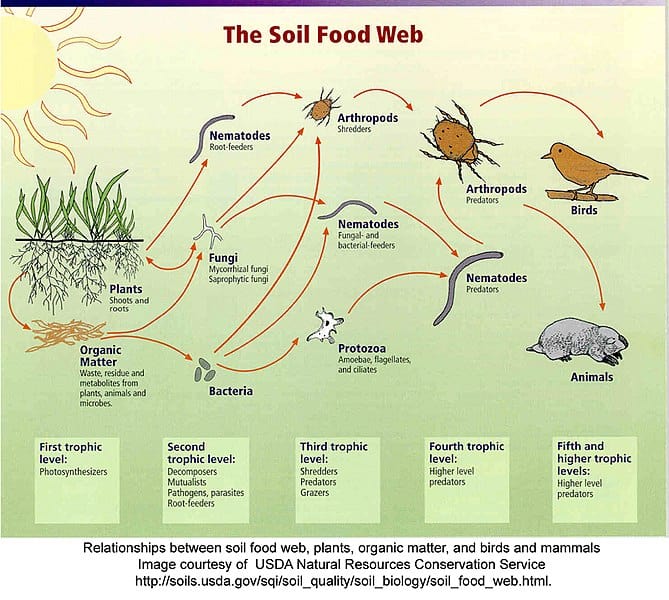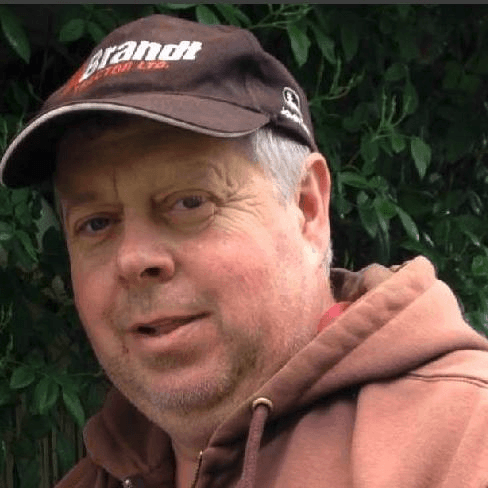Gardening is an incredibly popular activity that many of us spent our leisure time engaged with. We get to connect with the soil, plants, and soil organisms which live in and around our landscapes. If you Google gardening you’ll get over 12.5 million pages of reference material which would take most of us months or years to digest. In the next few weeks, I’m going to address a number of landscape myths that I feel require some clarity.
Landscape Myth #1
My soil is poor so I need fertilizer in order for plants to grow…
I hear this statement quite a bit and in my opinion, it is a misleading short-term approach to growing healthy plants that don’t factor in the whole. Let’s for a moment take a look at how nature works, forests are an abundant natural system in the pacific northwest and cover huge tracts of land. Do these require fertilizer to grow? The answer naturally is no, these don’t.
Okay so why is it my garden needs fertilizer??? Well, the truth is that it doesn’t need any fertilizer, in fact applying synthetic fertilizer will do more harm than good within your landscape. Why is that?
The life below our feet is, for the most part, is a forgotten land, we don’t’ realize that we are totally dependant on the top 6” of topsoil for all our food production worldwide. Without diverse soil organism, plants are going to struggle and will not happily grow, as soil organisms are responsible for cycling nutrients within our soil. Below ground, we find the wondrous world of soil organisms and the soil food web. We often encounter larger organisms such as worms when we are working within the garden, and rightly conclude that the soil is healthy. If you have worms present then there are favourable conditions for other organisms.
Why is this important? These organisms are responsible for delivering plant soluble nutrients to the root zone of your plants, if we apply synthetic fertilizer to the ground we are in essence adding a salt and this salt takes away water from your soil organisms leaving a drier less ideal habitat. Repeated applications of fertilizer will continue to reduce soil life and eventually your soil turns into dirt, which is made up of mineral (sand, silt, clay) without any life. If there is little or no life within your soil then you’ll be reliant on fertilizers to provide nutrients and thus you enter a dangerous cycle in which your whole landscape is dependant on inputs of fertilizer and increased water use to maintain life. This does not create healthy plants and often puts your plants into a position where they are susceptible to pest and diseases which leads to pesticide use which again reduces the soil life in your landscape. A slippery slope.
If your landscape looks like it needs some help what should you do? Well, your actions should always support soil organisms, instead of adding a salt based fertilizer try adding some high-quality compost. The compost is going to be full of soil biology as well as providing an excellent habitat for soil organisms. Compost is also going to improve your soil over time by increasing the percentage of organic matter as well and increasing the amount of water your soils can absorb and hold onto.
When we read that the UN predicts that topsoil within our agricultural systems will disappear within 50 years we should take notice and realize that up to now we have not been practicing good land stewardship. We can all do our part by looking after the soil within our own properties and see this as a vital part of our landscape health whether you growing lawn, gardens or vegetables. Consider this, a single teaspoon (1 gram) of rich garden soil can hold up to one billion bacteria, several yards of fungal filaments, several thousand protozoa, and scores of nematodes, according to Kathy Merrifield, a retired nematologist at Oregon State University. How many teaspoons are found within your property and how are you treating these important organisms?
So go out and give your soil a big huge by applying some compost today. Consider that in a landscape setting, just as in nature, we are continually building your soil, this process never ends.
Jamie Wallace operates Jaan Designs with his wife/life partner Angela. Together they design and build landscapes on Vancouver Island. Keep your eyes open for upcoming workshops and consider subscribing to their updates at https://www.jaandesigns.ca/
Source: https://extension.oregonstate.edu/node/82551


